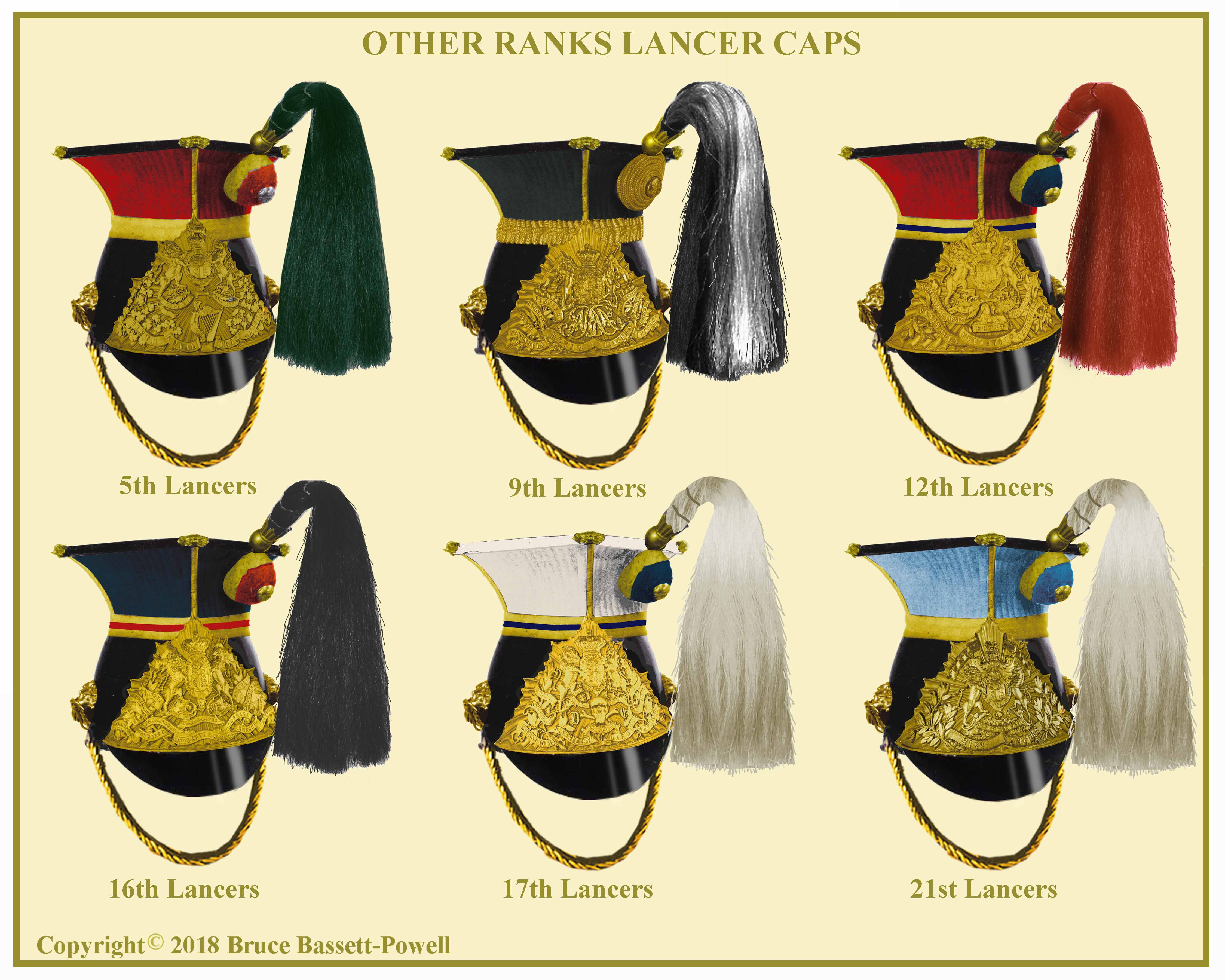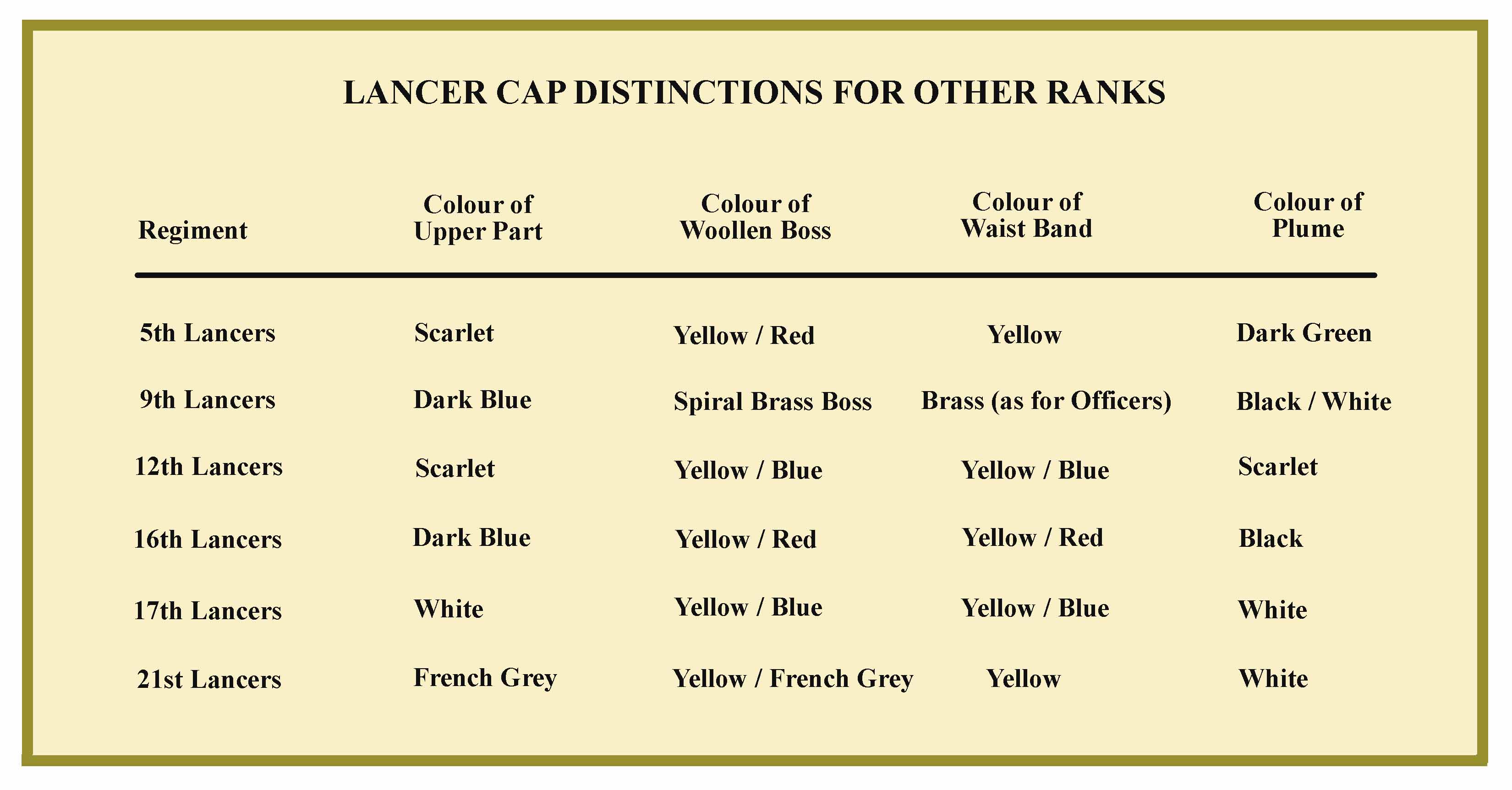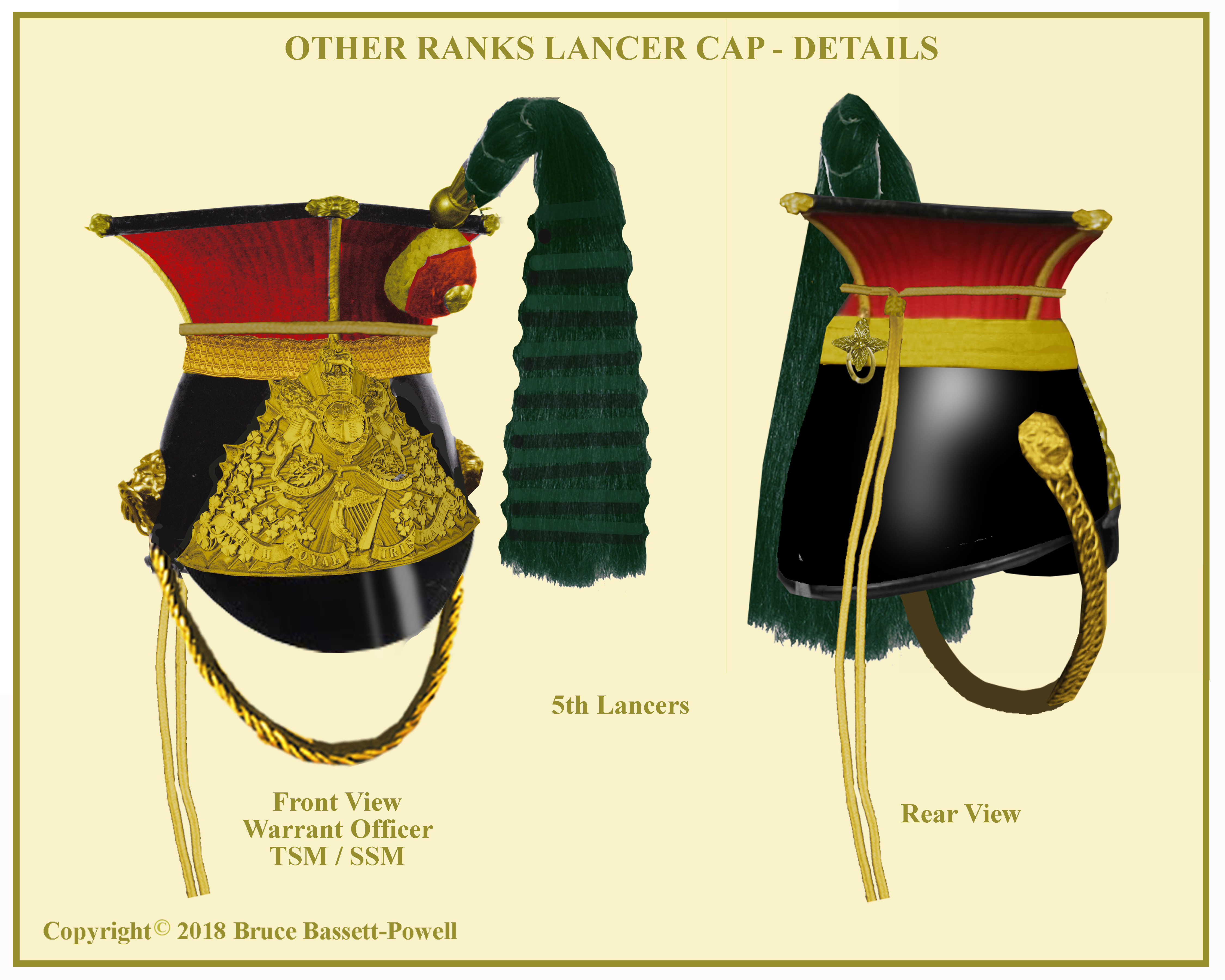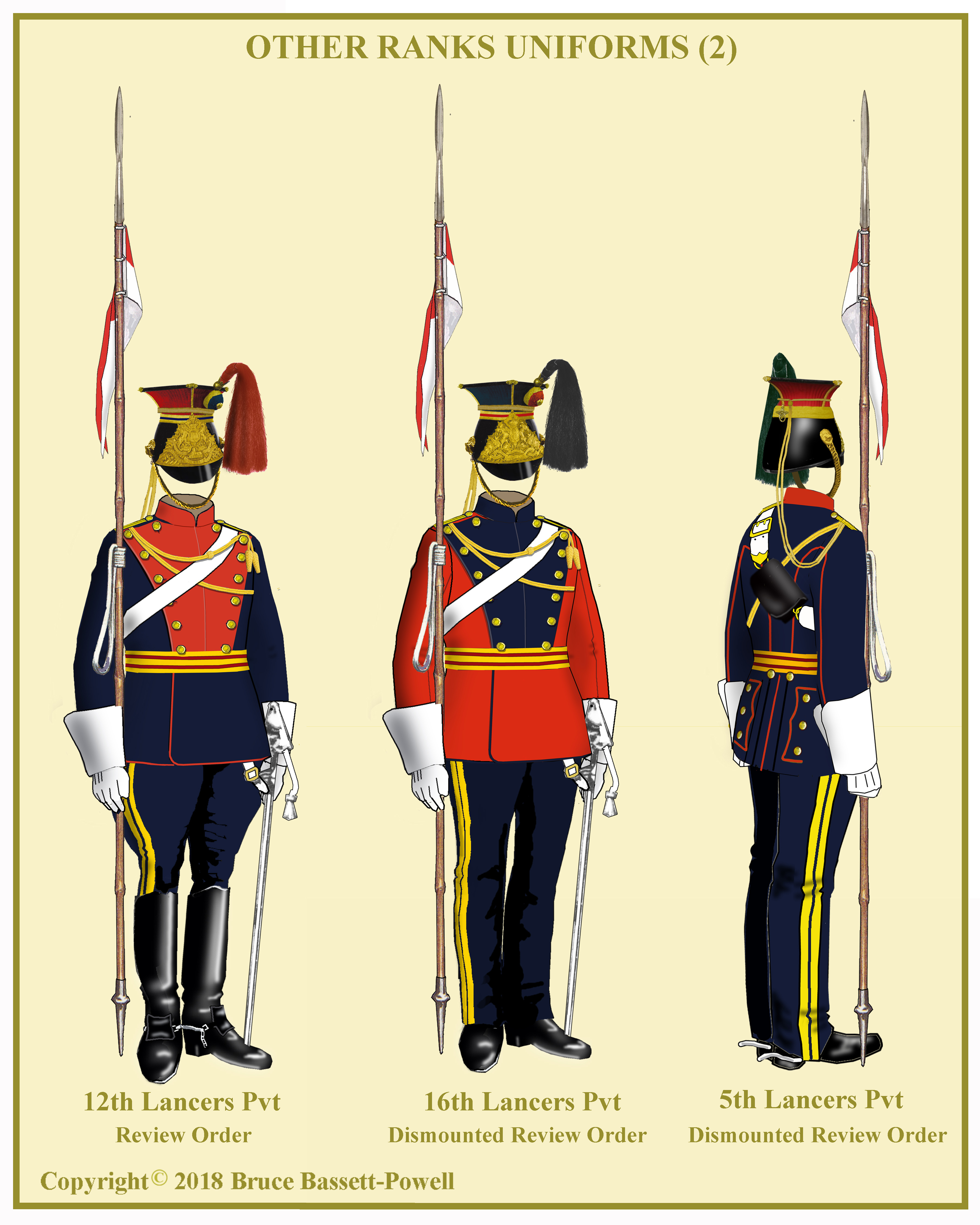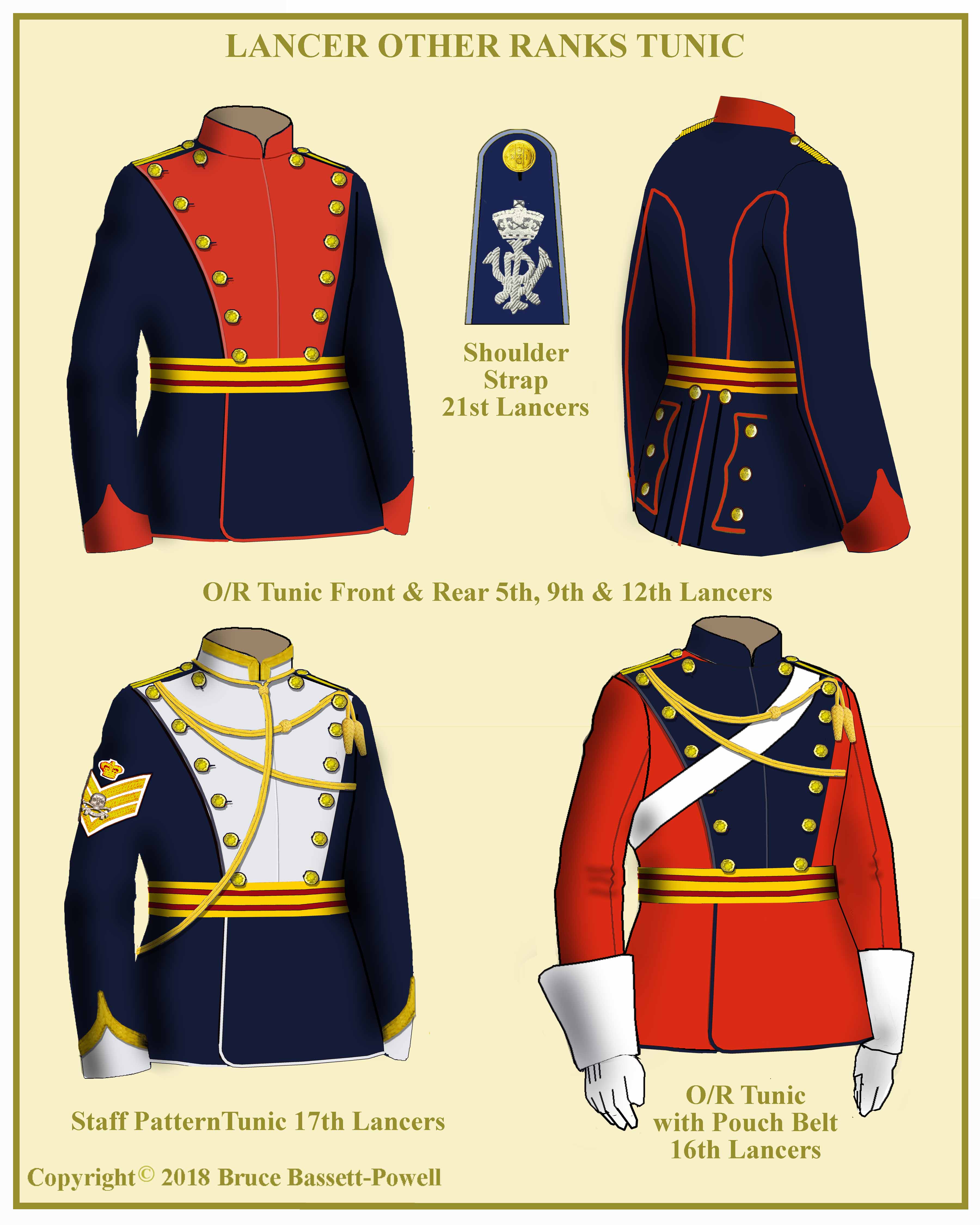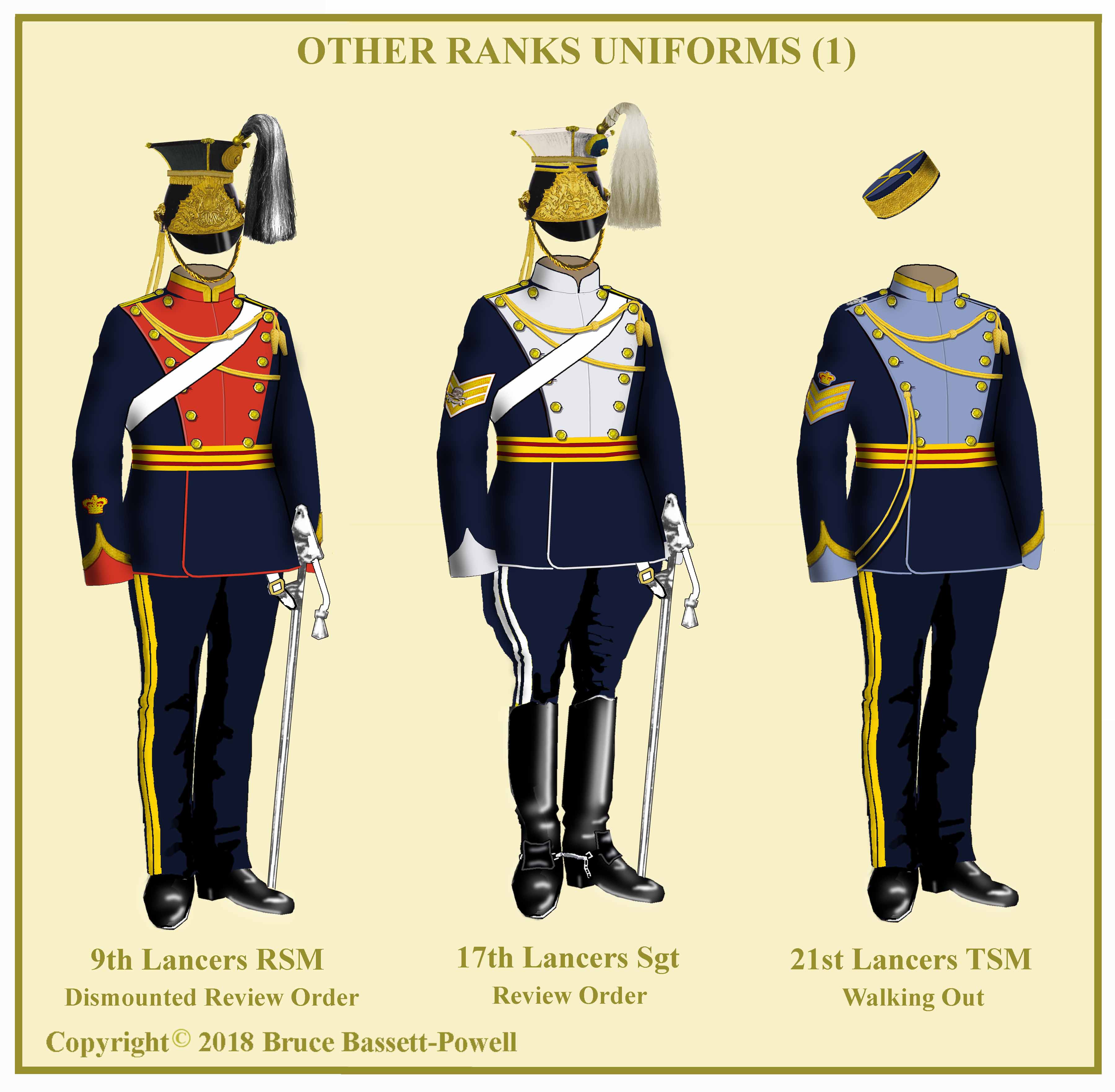UNIFORMS, ARMS & EQUIPMENT - LANCERS
OTHER RANKS FULL DRESS UNIFORMS
LANCER CAPS
The lancer cap for all other ranks was similar in proportion to the officer’s 1856 pattern with the obvious differences in materials and ornamentation. The black leather skull had a plain patent leather peak. The upper part was of ribbed cloth on four sides with a black patent leather top fitted with small brass ornaments on the corners. The 17th Lancers had a white leather top. On the front left panel there was a yellow woollen boss with a slot above to take the plume holder. Around the waist of the cap was a strip of yellow cotton cloth one inch wide with a central coloured stripe depending on the regiment. The cap plate was identical to the officers except that it was stamped from a single piece of brass. On each side of the skull was a lion’s head brass boss and the curb chain was the same as for all cavalry. On the rear of the cap on the waist strip was a small brass winged plate with a brass ring to hold the curb chin. The plume was of horsehair in regimental colours.
The soldiers Lancer Cap was about 6 ½ Inches at the front (excluding peak), 9 Inches at the back, 6 5/8 Inches at the sides (at the base) and 9 ¾ across the top (point to point). These dimensions varied according to the wearers head size.
Below is a chart indicating the colours of the various details.
Warrant officers and first class staff sergeants often had a waist band around the cap in gold lace instead of the yellow worsted band which did not become official until 1907. In the 9th Lancers the band was of gilding metal.
The horsehair plume is often shown in photographs to have a “crimped” appearance. This practice was not universal and appears not to have been worn by the 17th Lancers. In other regiments, commanding officers may have ordered the practise for special occasions or certain quarter-guards for visiting dignitaries. It was sometimes worn by bandsmen. Finally it seems that the crimping of plumes was far more common after 1902.
The caplines were of the same material, yellow worsted cord, as used by Hussars. The loop (said by some to be at least 10ft long) went around the waist of the cap, secured by a slider. The lines then went around the body, back across the front and looped up to the left shoulder with acorns hanging down. (See below on tunics)
TUNICS
The other ranks tunic was similar to officers. For all regiments it was dark blue except for the 16th Lancers which was scarlet. The collar and pointed cuffs were plain in facing colour and the plastron, or lapels were also plain. The lapel had a seam down the centre and fastened over to the right hand side with seven regimental buttons (one by the collar). For field days and on the march the lapel could be folded back and fastened onto the seven buttons on the left. There were two flat buttons on the bottom of the lapels. The tunic was piped on the front edge, skirts and rear seams of back and sleeves in facing colour. A three pointed flap on each rear skirt was also edged in facing colour. There were three regimental buttons on each flap at the rear and two at the waist. Yellow worsted shoulder cords were secured by two small regimental buttons. When the 21st were converted to Lancers, they adopted blue shoulder straps piped french grey bearing the Imperial Cypher in white worsted.
The tunic worn by warrant officers and staff-sergeants was the same as other ranks (in some cases of better materials) except that the collar and cuffs were edged with gold lace.
The illustrations show how the cap lines went around the body both with and without the lancer cap being worn. Again, the 21st Lancers wore the caplines (without the lancer cap) in a different manner, attached to the fourth button down on the right.
The pantaloons and overalls were the standard issue for all cavalry with double yellow stripes down the sides, except for the 17th Lancers in which the stripes were white.
In Review Order (Both mounted and dismounted) soldiers wore the white leather pouch belt and pouch until 1902 with the sword belt under the tunic. In addition, white leather gauntlets were worn.
Next
BADGES OF RANK & TRADE



